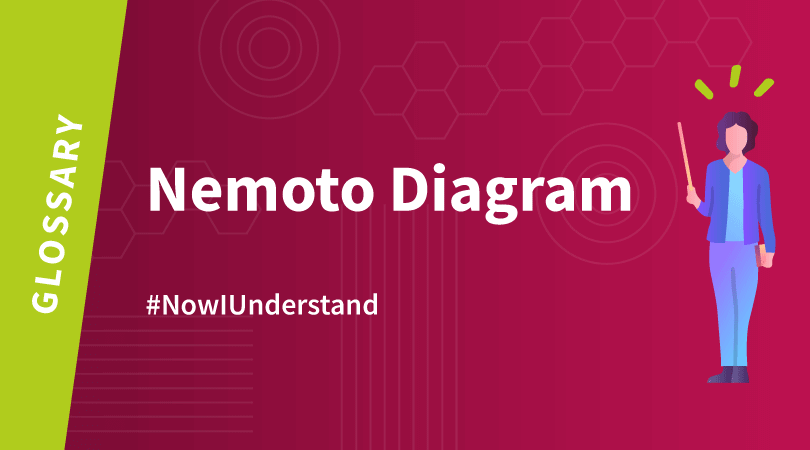The acronym VUCA – Volatility, Uncertainty, Complexity and Ambiguity – is now starting to make inroads into more and more businesses, with good reason.
In an ever-more digitalised world, where skills and resources are becoming scarcer, competition is increasingly fierce and customer requirements, standards and markets are climbing ever higher, organisations are struggling to cope with the many changes facing them. Their environment has become volatile, uncertain, complex and all too often ambiguous. VUCA therefore is intended to aid understanding, so that employees can once again take well-informed decisions and find solutions to their problems. But does it serve any practical purpose in managing uncertainty?
The history and definition of VUCA
The term “VUCA” first entered the public consciousness in 1998 with the publication by the US Army War College of their “Strategic Leadership Primer”. VUCA is actually an American military concept devised at the end of the Cold War to address an unprecedented situation, i.e. the end of the hegemony of two opposing superpowers, and adjust to it.
The concept has since been gradually adopted by businesses, in view of the extent to which the features of current environments match the four VUCA characteristics, impacting not only both corporate strategy and decision-making, but also how projects can be efficiently planned and managed for all members of staff.
However, it should be emphasised that VUCA is not a methodology whereby a readymade set of solutions can be applied. VUCA is rather a checklist, helping to better characterise and understand an environment from different angles. The fact remains too that some common-sense measures can be taken for each of the attributes in the acronym.
Volatility
The expansion of digital technology into our daily lives shows us that everything can now change very quickly. Who would have thought that the humble Yuka app would have shaken up the agri-food giants so much in the space of a few short years?
At the organisational level, every project has to cope with unexpected events that disrupt project teams, such as changes to regulations, the departure of key employees, crucial documents that are late to arrive, etc. To address any form of volatility, whether it comes from the external environment or has an internal source, a clear vision shared by all must be built so as not to lose sight of the real objectives, while working on all possible scenarios in order to adapt, again and again.
Uncertainty
Companies’ current difficulties in predicting and anticipating the impact of the many changes in their markets on their own performance should be obvious. While no-one knows what tomorrow will bring, reducing this uncertainty with relevant information and action plan management has become vital to improve anticipation and deal with any eventuality.
By working with constantly updated, consolidated and shared information, senior management can reduce the risks arising from uncertainty. They can even turn risks to their advantage by combining them with a bolder innovation policy to convert them into competitive advantages, thus strengthening their competitiveness.
Complexity
The complexity of economic, social and technological environments nowadays is the result of the large number of highly dynamic factors that must be taken into account, even though their interdependencies are hard to fully understand. Situations can sometimes develop so quickly that organisations do not have time to grasp what is happening, which has a destabilising effect.
This rampant complexity must therefore lead organisations to rely more on cross-functional cooperation and collaboration. In search of knowledge, information and expertise covering ever more diverse and varied subjects, promoting collective intelligence is often the best response to obtain a consolidated overview and find new solutions, which may sometimes be experimental but are always innovative.
Ambiguity
Ambiguity refers to the possible different ways of interpreting a given event. It might be a misinterpretation of cause-and-effect relationships, conflicts of interest that block decisions, or a fear of heading in the wrong direction. Making a decision without having the full picture is definitely a risk that no one wants to take.
Awareness of such ambiguity as a pitfall to be avoided is already a large step towards the solution that does precisely that. Agility is the watchword here. Do not cling to convictions, and adopt a flexible stance when new light is shed on a situation.
The four attributes of VUCA therefore seem to facilitate a characterisation of the world in which we are living and working; a world where projects, strategies and priorities are constantly, and rapidly, shifting. A world in which organisations have no choice but to move quickly, very quickly, seamlessly reconciling agility and complexity, if they want to maintain their performance level. Feel free to download our latest expert opinion on the subject to find out more:

Can VUCA really help to improve management of uncertainty?
While for some changes, organisations can use “simplified” methods such as the Beckhard-Harris formula for change, these are not always enough to provide the full picture and deliver a response to major challenges.
Admittedly, VUCA is not a method, and it does not deliver off-the-shelf solutions, but following its four component parts can nonetheless serve to map out uncertain situations and characterise them in terms of a number of essential aspects affecting key areas of business strategy.
On the other hand, while some do see VUCA as a new, one-size-fits-all miracle cure, the same cannot be said of everyone. Philippe Silberzahn questioned the concept on his blog. It is quite right to wonder about whether VUCA is useful in all circumstances, mixing as it does a number of very different concepts, some being characteristics specific to the environment, and others the result of cognitive limitations. The vision of the environment provided by VUCA can even be misleading and cause undue anxiety, depending on the business sector, because the current norm is not total chaos, either. It is therefore only a checklist that leaves a great deal of leeway in both interpretation and use of concepts it is designed to help clarify.
Perhaps its main failing is that it conceals the real challenge. There is no point in fighting against an ever-changing world when the application of good sense, a clear strategy, and tried-and-tested methods such as participative innovation and the search for operational excellence already make it possible to deal with many complex situations and achieve realistic objectives in a given situation.



